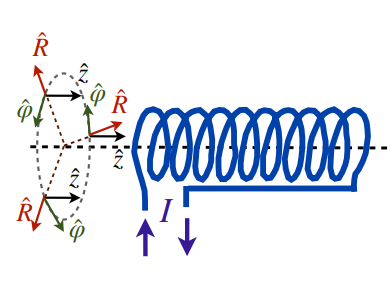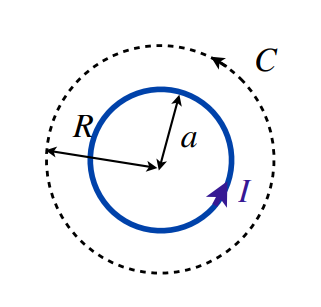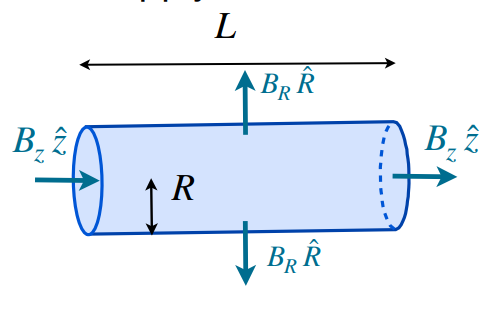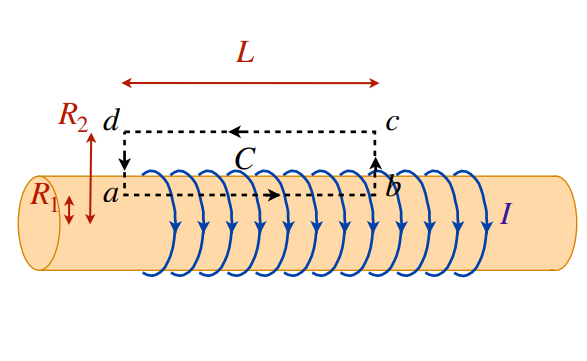PX157 - C8 - solenoid

-
a helical winding of wire, usually a cylinder
-
assuming the solenoid is long, so the edge effects can be neglected
-
assuming the number of turns per unit length,
, is large, , so axial symmetry can be assumed -
assuming the wire is wound forward and backward so there is no net current along the axis
-
using cylindrical coordinates,
, with -direction along the axis -
the solenoid has radius,
, and the current flows in the positive -direction -
by symmetry,
is a function of alone
- step 1:

- applying ampere's law to path
- applying ampere's law to path
-
-
-
step 2: solenoidal condition

- left and right cancel due to symmetry as solution does not depend on z
-
step 3:

- choosing a rectangular path in the plane of constant
outside the solenoid and applying ampere's law:
- choosing a rectangular path in the plane of constant
- outside the solenoid,
-
- taking
-
- step 4:

- choosing a rectangular path in a plane of constant
, in and out of the solenoid and applying ampere's law:
- choosing a rectangular path in a plane of constant
- since
- for a solenoid that is not infinitely long, all field lines must pass though the cross-section,
, but outside the solenoid, the field lines can pass though anywhere. therefore, the field density outside is much smaller in comparison to that inside the solenoid. hence, the above result is sensible